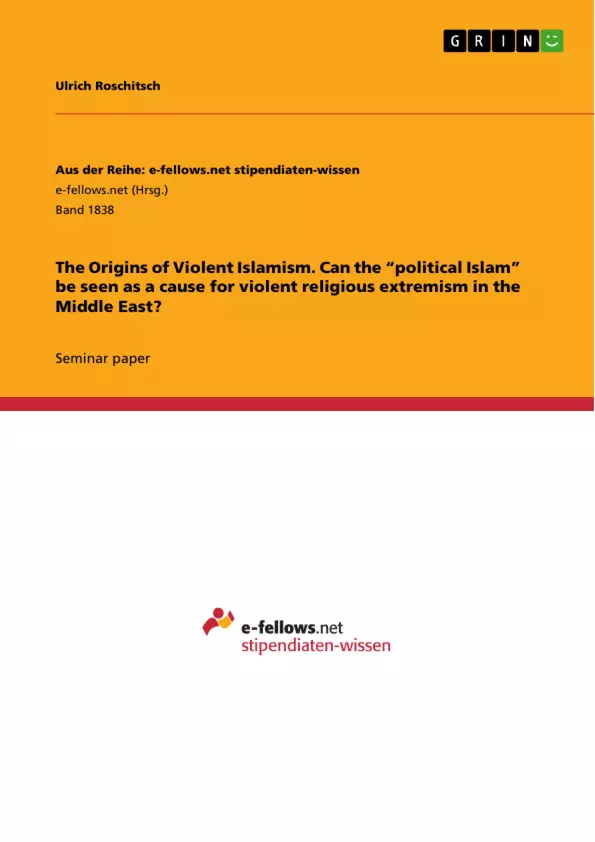Violent religious extremism is to be found nearly everywhere in human history. Yet, it seems today, as if the Arab world – and most lately Syria – would be the 'hub' of religiously motivated terrorist activities. But where do these movements come from? What are their roots?
The key assumption of this paper is, that the origin of religious extremism (but not necessarily religious extremism itself) is to seek in the rise of political Islam in the middle of the 20th century. Therefore, the central question to answering the questions above is: How could a constructive force, like the political Islam, lay the foundations for such a destructive force as is Islamist terrorism?
Content
Introduction
1 What is political Islam
1.1 Where did political Islam come from
1.2 The main ideological characteristics of political Isla
2 Islamist terrorism: a characterization on the example of ISI
2.1 Where and how did ISIS emerge
2.2 How does ISIS recruit its members?.
2.3 The ideology and goals of ISIS and other violent Islamist groups
3 What's the link between violent Islamism and the political Islam?
3.1 Ideological links and transitions between the political Islam and violent Islamism
3.2 The transition of political Islam into violent Islamism
Conclusion
Notes
Bibliography
- Citar trabajo
- Ulrich Roschitsch (Autor), 2015, The Origins of Violent Islamism. Can the “political Islam” be seen as a cause for violent religious extremism in the Middle East?, Múnich, GRIN Verlag, https://www.grin.com/document/334507



